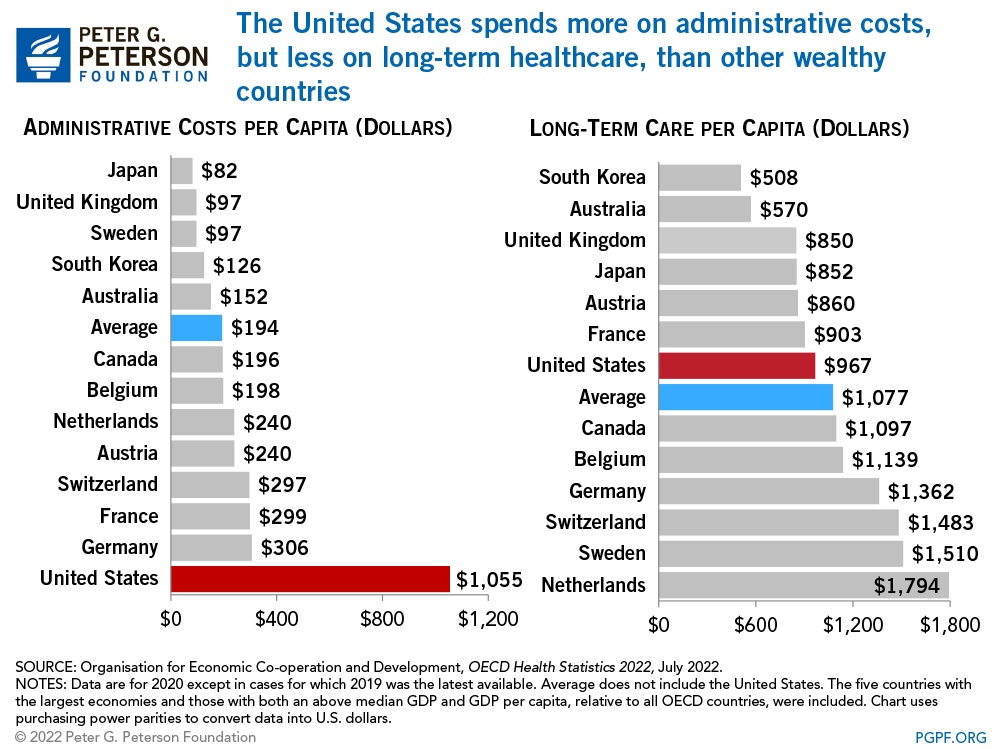Overview
Dr. Sean Flynn begins by explaining in his lecture video the differences between percentages from total government income that goes to healthcare in different countries. In the United States, eighteen percent of our GDP goes to healthcare compared to Singapore, which is only about give percent of income that goes directly to healthcare. With this being said, Singapore was forced to figure out how to do other things in their country cheaper because of their 10% of government income going towards their military forces due to their issues with Malaysia. Every other country puts only a couple percent towards military forces; the United States puts about three percent of GDP towards military forces. Because of this, the costs of healthcare are so much more in the United States than in Singapore. Furthermore, if someone had a huge surgery they had to get done in the United States, the government would have to be an extreme amount of money for it whereas Singapore would only charge a fraction of that money. As far as servicing people for healthcare in the United States, the largest incentive is to be paid. Dr. Sean Flynn speaks about how whenever you walk into a doctor’s office, the first thing you are asked for is your insurance card because they are mostly worried about being paid. Singapore also has the world’s best safety net, because if you are indigent there, you will get the exact same care by the same doctors in the same hospitals and the government will pay your bill for an extremely cheaper price than the United States.
Singapore VS. United States
Another example of the differences between Singapore and the United States is that in the U.S. you cannot get prices in advance for healthcare costs compared to Singapore where you know what you’re getting yourself into. Also, if you know what you need done, such as surgery, you can look online for every single institute that could offer that service and the comparable prices of each. Along with not knowing what the prices of services will cost in the U.S. is struggling to pay for hospital bills and such that insurance doesn’t cover. The average person in the U.S. can’t even pay for a random $400 bill of healthcare and most of the time it costs a large amount over that price. I had a personal experience with this a while ago because I didn’t realize the amount of money I was going to owe for a few simple services at a hospital, and my insurance ended up barely paying for any of it which left me with a large bill and a giant problem.
A Change for the Better
Dr. Sean Flynn ended his lecture by offering different instances in the United States where healthcare was provided for such families/individuals who didn’t make enough money to afford insurance on their own and instead was provided healthcare by the government. This is a better version of Medicaid only offered in Indiana; Medicaid doesn’t provide quality healthcare or in a reasonable amount of time due to the circumstances of it. But, with this version of Medicaid, it is very beneficial for both the person and the government. Instead of providing an infinite amount of money of healthcare to these individuals/families, which would in turn make them not consider cheaper pricing, DR. Sean Flynn explained how in Indiana there is this same idea but a deductible of $1,100 and then the rest was paid for by the government and if the person moved to a job with higher pay, they would not be able to qualify for this benefit anymore, but would still be able to keep all of the money they saved overtime from this plan. In conclusion, this would make people consider cheaper pricing for healthcare instead of going to a hospital spending near $10,000 when they could instead go to the doctor’s office nearby and get the same treatment for an extreme less price. This is a great benefit for people in the state of Indiana who qualify for this, but not many people know about it.
The only way for healthcare in the U.S. to become like Singapore is for prices to be cut 75%. This can happen by everyone in the economy cutting their useless spending by 35%, which would make these businesses notice and lower their prices since they are not earning as much in sales, which would in turn drop healthcare prices.
My Opinion
Overall, I think DR. Sean Flynn offers a lot of valuable information that is very interesting. Before watching this lecture video, I would’ve thought just since a country put more money towards a certain thing, in this case healthcare, which would mean it was elite compared to other countries who put only a fraction of that towards the same thing. Furthermore, it is mind-blowing that since Singapore only puts five percent of government income towards healthcare it is so much better than the United States who puts thirteen percent more GDP towards healthcare than Singapore. Since Dr. Sean Flynn explains how since the United States is largely private insurance-based and are primarily focused on their paycheck instead of giving quality care. They are extremely expensive because of insurance and the insurance is rising 8% in prices every year, making the expenses raise even more. On the other hand, Singapore has cheaper prices due to the government paying for their healthcare services and the lower percentage of government income going towards healthcare. They also prioritize efficiency with strong government oversight making the services and care quality.

'Image Source'
Hunkar, David. Topforeignstocks.Com, 7 Sept. 2022, topforeignstocks.com/2022/09/07/healthcare-administrative-costs-per-capita-by-country-chart/.